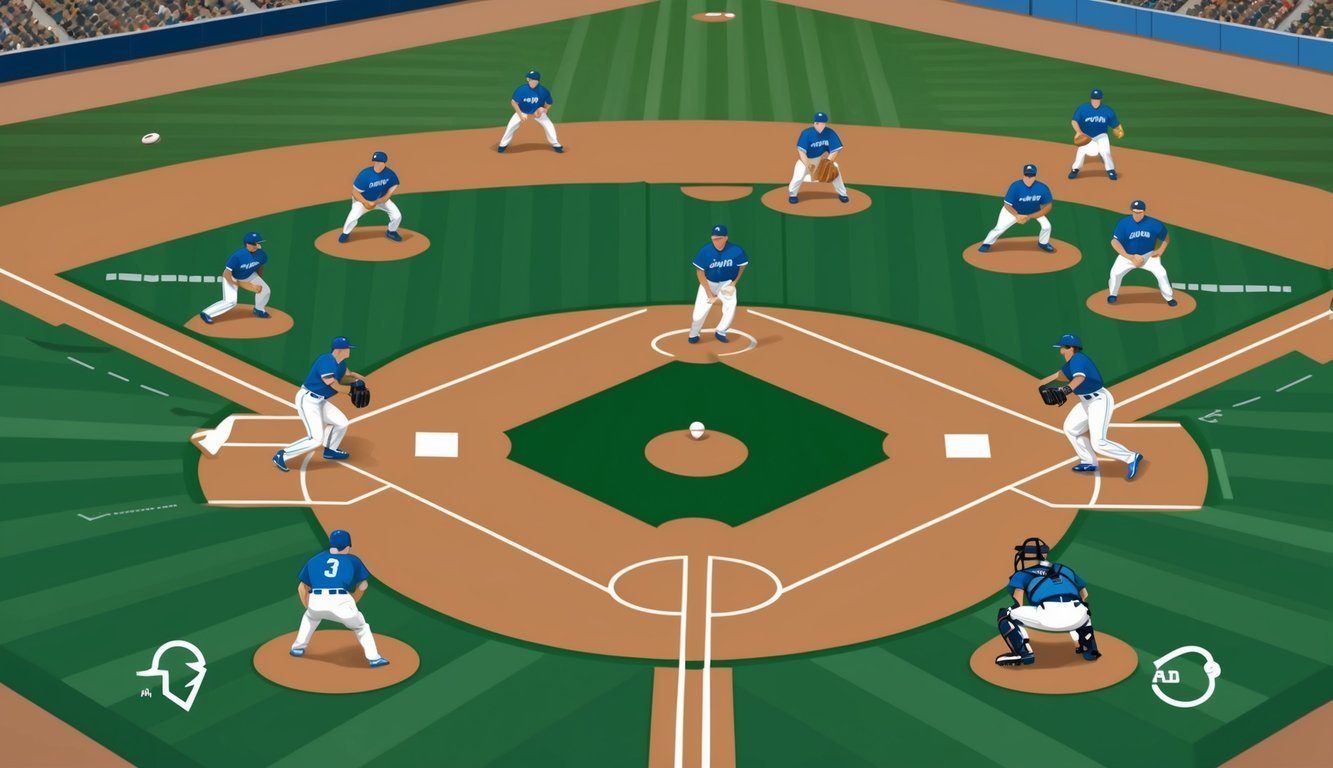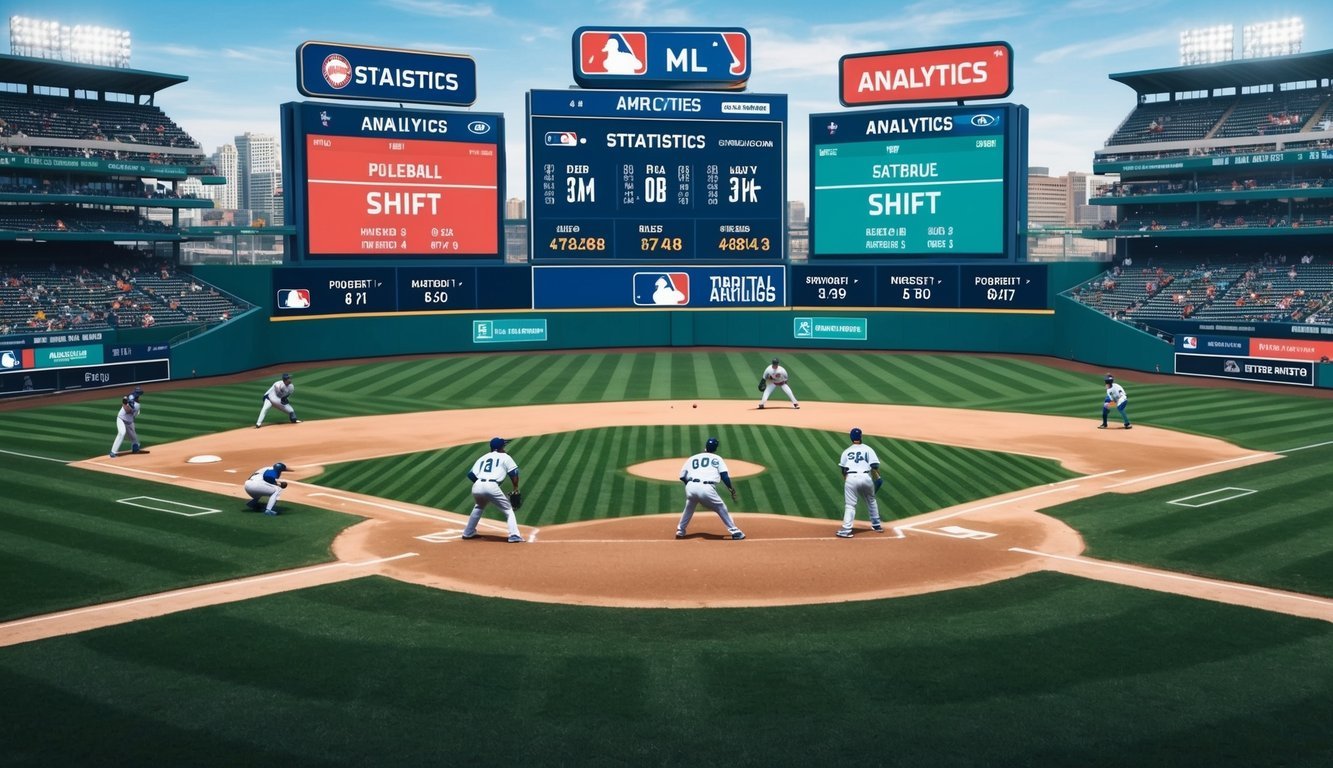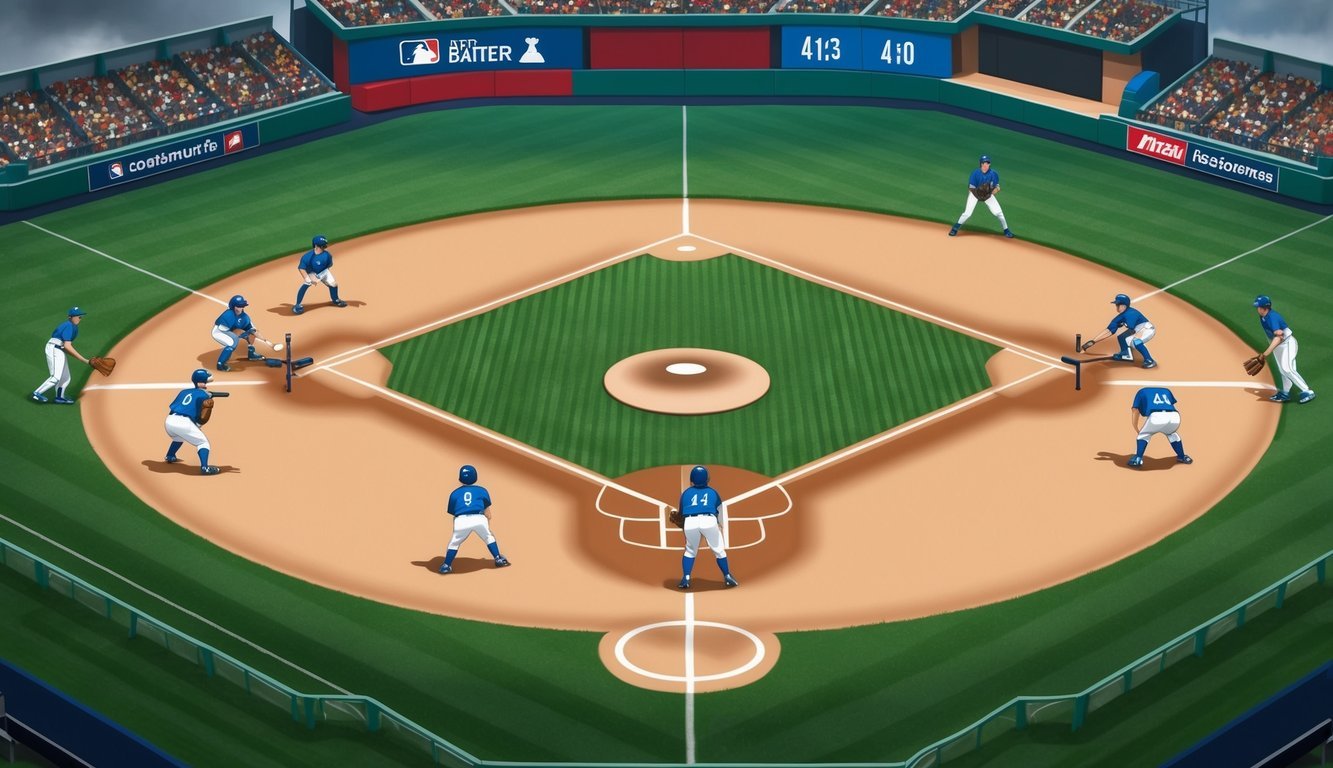Baseball fans have witnessed a significant change in Major League Baseball’s defensive strategies in recent years.
The infield shift, once a staple of modern defensive alignments, has undergone a transformation for the 2023 season. MLB implemented new rules requiring teams to have two infielders on each side of second base and all four positioned on the infield dirt when a pitch is thrown.
This adjustment aims to increase offensive production and encourage more traditional defensive positioning.
The shift had become a powerful tool for teams to combat certain hitters, particularly left-handed batters prone to pulling the ball.
Now, infielders must be more versatile and adaptable, ready to cover ground quickly after the pitch is released.
The impact of these new regulations extends beyond just the positioning of players.
It affects batting strategies, base running, and even pitching approaches.
As teams and players adapt to the revised landscape, baseball enthusiasts can expect to see evolving tactics and potentially more hits finding their way through the infield.
These changes not only emphasize the need for players to refine their skills but also challenge coaches to develop innovative game plans.
With the introduction of the MLB bat rules for 2025 season, there will be heightened scrutiny on equipment and player performance, leading to strategic alterations in batting techniques.
As the league continues to adapt, fans can look forward to witnessing a thrilling evolution of the game, where every pitch and swing becomes a critical element in the quest for victory.
Understanding the Shift in Baseball

The defensive shift has become a strategic cornerstone in modern baseball.
It alters the traditional positioning of fielders to counter specific batting tendencies, reshaping how the game is played at the highest levels.
Evolution of the Defensive Shift
Shifts in baseball aren’t new, but their use has skyrocketed in recent years.
Teams like the Houston Astros have led the charge, employing shifts on over 40% of plate appearances by 2018.
This dramatic increase reflects advancements in data analysis and player positioning technology.
The shift typically involves moving infielders to one side of the field based on a batter’s hitting patterns.
In extreme cases, teams have even experimented with four-man outfields to combat fly ball hitters.
As shifts became more prevalent, they sparked debates about their impact on the game’s integrity and entertainment value.
Shift Impact on Hitters and Pitchers
Shifts have significantly affected both hitters and pitchers.
Many left-handed batters face extreme alignments, with three infielders on the right side of the field.
This defensive strategy has forced hitters to adapt their approach or risk hitting into the shift.
Some batters have found success by bunting or hitting to the opposite field.
Others have seen their batting averages drop as hard-hit balls find gloves instead of open field.
For pitchers, the shift provides an extra layer of defensive support.
It allows them to pitch to contact more confidently, knowing their fielders are optimally positioned.
However, it can also change pitch selection and location strategies.
The defensive team benefits from shifts by turning more potential hits into outs.
This efficiency has contributed to the ongoing battle between offense and defense in MLB.
Rules and Regulation Changes
Major League Baseball introduced significant rule changes in 2023 to enhance game pace and increase action on the field.
These adjustments aimed to make baseball more exciting for fans while preserving the sport’s core elements.
2023 MLB Rule Adjustments
The competition committee, led by Commissioner Rob Manfred, approved several new rules for the 2023 season.
A pitch clock was implemented to speed up the game.
Pitchers now have 15 seconds to throw with bases empty and 20 seconds with runners on base.
Defensive shifts were restricted.
Teams must keep two infielders on each side of second base, with all four required to have both feet on the infield dirt.
This change aims to increase batting averages on balls in play.
Larger bases were introduced, expanding from 15 to 18 inches square.
This adjustment reduces the distance between bases by 4.5 inches, promoting more stolen base attempts and reducing collisions.
Impact of New Rules on Game Pace
The pitch timer has dramatically reduced game times.
Average game length decreased by about 30 minutes in 2023.
Players adapted quickly, with violations becoming less frequent as the season progressed.
The shift restrictions led to more hits, especially for left-handed batters.
Infielders showcased their athleticism with spectacular plays, adding excitement to the game.
Stolen base attempts increased due to the larger bases.
This change brought back a thrilling aspect of baseball that had declined in recent years.
Fans have generally responded positively to the faster pace and increased action on the field.
The new rules have successfully modernized baseball while maintaining its traditions.
Strategic Considerations for Teams
Teams must carefully weigh positioning and player strengths when implementing shifts.
Balancing defensive alignment with offensive strategy is crucial for maximizing overall performance on the field.
Positioning Infielders and Outfielders
Infield shifts often involve moving the shortstop to the right side of second base against pull-heavy left-handed hitters.
Teams may place their best defender in the most likely hit zone.
Some clubs experiment with four-outfielder alignments against extreme fly ball hitters.
The Rays have been shift pioneers, frequently using creative defensive setups.
They’ve found success by tailoring positions to each batter’s tendencies.
Outfield positioning is equally important.
Coaches may shade fielders towards areas where hitters are most likely to drive the ball.
This can mean playing deeper or cheating towards the lines.
Balancing Offense and Defense
While shifts can improve defensive outcomes, teams must consider potential offensive trade-offs.
Extreme alignments may leave gaps that savvy hitters can exploit.
Some batters have adapted by learning to hit to the opposite field.
Others focus on elevating the ball over shifted infielders.
Smart teams adjust their strategies based on how opponents respond.
Managers weigh defensive gains against possible hits surrendered.
They also factor in their own lineup’s strengths.
A team with power hitters might shift more aggressively, knowing they can overcome any extra hits allowed.
Statistics and Analytics

Advanced data and technology have revolutionized how teams analyze and implement defensive shifts in MLB.
Teams now use sophisticated tools to measure shift effectiveness and make data-driven decisions.
Measuring the Effectiveness of the Shift
Statcast and Baseball Savant provide invaluable insights into shift performance.
These systems track every batted ball, allowing teams to calculate batting average on balls in play (BABIP) against various shift alignments.
Teams compare BABIP for shifted and non-shifted defenses to gauge effectiveness.
A lower BABIP indicates the shift is working well.
Ground ball rates and singles allowed are key metrics.
Effective shifts turn more grounders into outs and reduce singles up the middle.
Data-Driven Shift Decisions
Teams analyze spray charts and tendencies for each batter.
Left-handed pull hitters often face extreme shifts with three infielders on the right side.
Pitcher attributes factor in too.
Ground ball pitchers may see more aggressive shifts behind them.
The league-wide batting average against shifts is closely monitored.
As hitters adjust, teams tweak their approaches.
Some teams use predictive models to optimize positioning for each batter-pitcher matchup.
These factor in numerous variables like count, pitch type, and weather conditions.
Player Perspectives and Adaptations

The shift dramatically altered baseball strategy, prompting players to evolve their approaches.
Batters and defenders alike had to adapt their skills and mindsets to navigate this tactical landscape.
Adjustments by Batters to Beat the Shift
Many hitters developed new techniques to counter the shift.
Some focused on hitting to the opposite field, aiming to place the ball where defenders weren’t. Others worked on bunting skills to exploit open areas of the infield.
Joey Gallo, known for pulling the ball, practiced hitting to all fields.
This adjustment helped him increase his batting average and on-base percentage.
Some batters changed their swing paths to hit more line drives and fewer groundballs.
This strategy aimed to reduce the shift’s effectiveness by putting the ball in the air.
Plate discipline became crucial.
Batters learned to be more selective, waiting for pitches they could drive to undefended areas.
Defensive Players’ View on the Shift
Infielders had to become more versatile with the shift.
They often played out of their traditional positions, requiring improved agility and decision-making skills.
Shortstops sometimes found themselves in shallow right field.
This new positioning demanded better communication with outfielders to avoid collisions on pop-ups.
Second basemen often played deeper in the outfield grass.
This adjustment called for stronger throwing arms to make plays at first base.
Some defenders enjoyed the strategic aspects of shifting.
It allowed them to showcase their baseball IQ and adaptability.
Others found it challenging, as it sometimes left them vulnerable to hard-hit balls in unfamiliar positions.
